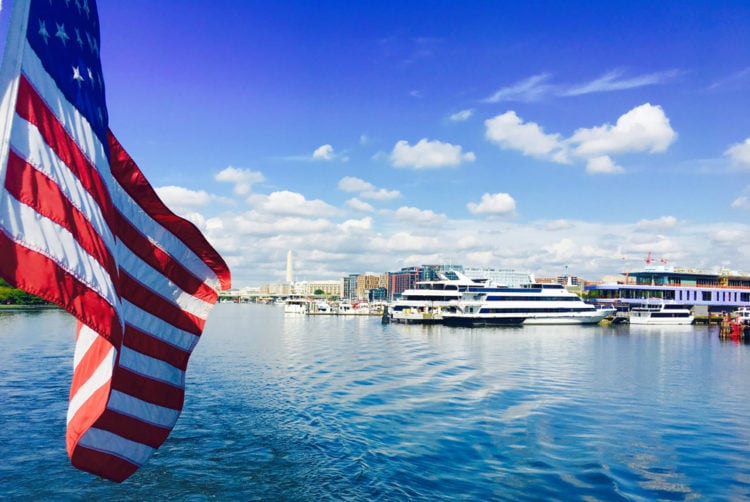The 30 Best High Schools in the Western U.S.: Rankings and Academic Excellence
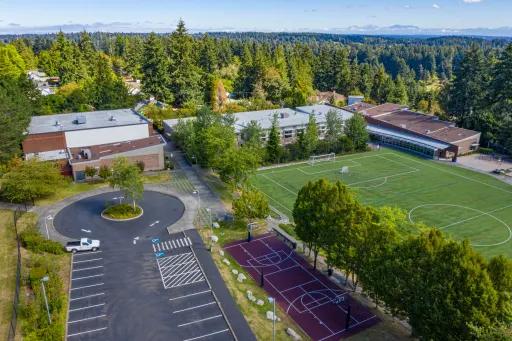
The Western United States has established itself as home to some of the nation’s most academically rigorous and innovative high schools.
From Seattle’s technology-focused institutions to California’s Silicon Valley powerhouses and Arizona’s rapidly expanding BASIS network, these schools consistently produce college-ready graduates who excel in competitive university admissions.
These top-performing western high schools span diverse educational approaches, including specialized STEM programs, arts academies, and comprehensive college preparatory institutions that cater to various student interests and learning styles.
Students and families considering these options will find schools that emphasize everything from cutting-edge technology integration to traditional liberal arts education, with many institutions offering unique pathways in engineering, biotechnology, and emerging fields that reflect the region’s innovation economy.
Here are the 30 best high schools in the Western U.S. :
1. Lakeside School, Seattle, WA
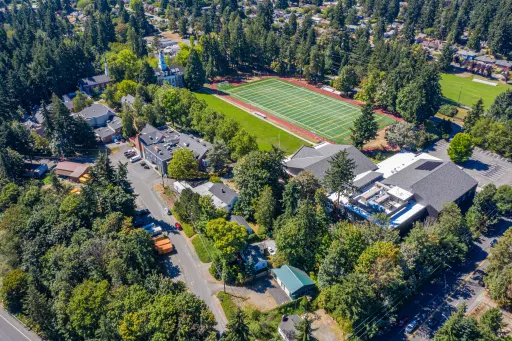
Lakeside School stands as one of Washington’s most prestigious private institutions. Located in Seattle, this grades 5-12 school serves 876 students with a 9-to-1 student-teacher ratio.
The school ranks 9th among the Best Private High Schools in America according to Niche rankings. It also holds the #2 position for Best High Schools for STEM in Washington state.
Academic excellence defines Lakeside’s reputation. One hundred percent of graduates attend four-year colleges after completing their studies. This achievement reflects the school’s rigorous academic standards and college preparation programs.
Tuition reaches $49,350 for the highest grade offered. The school gained notable recognition as the alma mater of Microsoft founder Bill Gates, who enrolled at age 13.
Lakeside’s location on the shores of Lake Washington provides students with an exceptional learning environment in one of Seattle’s most desirable areas.
2. Henry M. Jackson High School, Mill Creek, WA
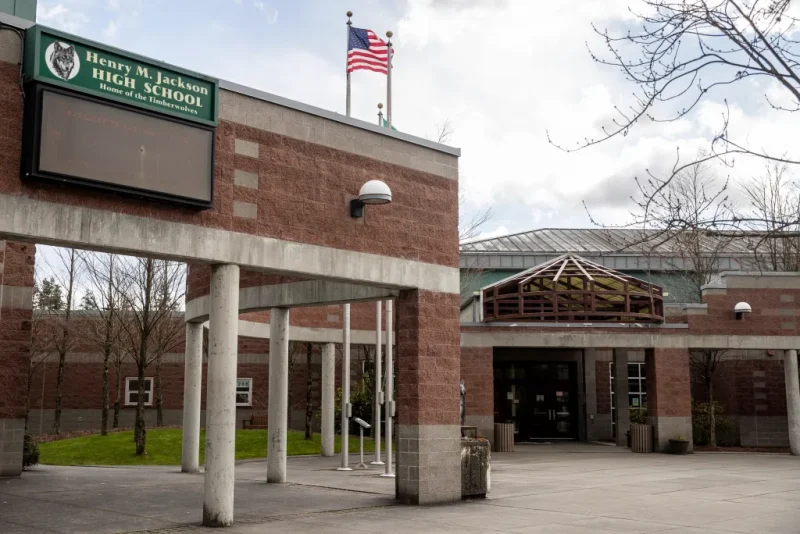
Henry M. Jackson High School serves 2,157 students in grades 9-12 in Mill Creek, Washington. The school opened in September 1994 as the third high school in the Everett School District.
Named after former U.S. Senator Henry M. Jackson, an Everett native, the school has achieved strong academic recognition. It ranks within the top 20% of all public schools in Washington state.
The school offers Advanced Placement courses and participates in the Project Lead The Way curriculum program. Students can choose from 22 different sports programs.
Jackson High School belongs to the Everett School District, which holds a 4-star rating and ranks 48th out of 247 districts statewide. The school has shown consistent improvement in state rankings over recent years.
The institution provides comprehensive educational opportunities for students in the Mill Creek area.
3. Redmond High School, Redmond, WA
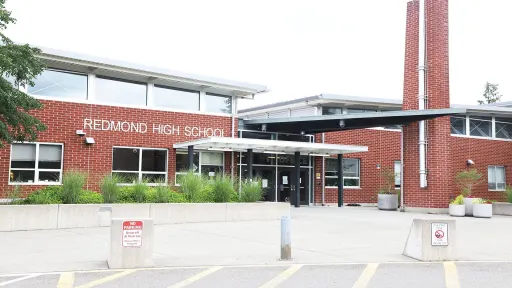
Redmond High School operates within the Lake Washington School District, which ranks 4th out of 247 districts statewide. The district maintains a 5-star rating and serves the Redmond community with 22 total schools.
The school consistently appears in state rankings for Washington high schools. It serves students in grades 9-12 in the city of Redmond.
Redmond High School benefits from being part of a high-performing district known for academic excellence. The Lake Washington School District has established a strong reputation throughout Washington state.
The school provides comprehensive education in a community known for its proximity to major technology companies. Students have access to various academic programs and extracurricular activities.
Redmond High School remains one of the notable public high schools in the greater Seattle metropolitan area. The institution continues to serve families in the Redmond community.
4. Interlake High School, Bellevue, WA
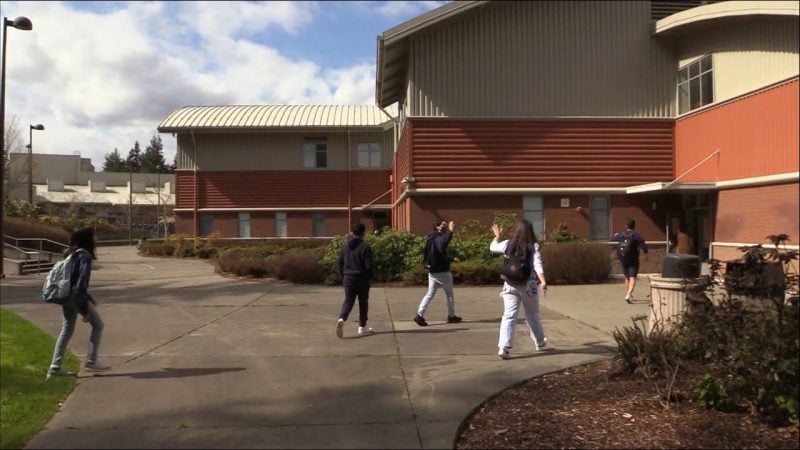
Interlake Senior High School ranks within the top 5% of all public schools in Washington state. The school serves 1,604 students in grades 9-12 in Bellevue.
The institution has received recognition among the nation’s best high schools. School Evaluation Services included Interlake among 1,900 schools nationwide for academic excellence.
Located in the Bellevue School District, Interlake maintains strong academic standards. The school consistently appears in state and national rankings for educational quality.
Students benefit from the school’s established reputation in the Seattle metropolitan area. The campus provides educational opportunities for a diverse student population across four grade levels.
Interlake competes with other top-performing schools in the Bellevue area. The school has earned its position through consistent academic performance and student achievement metrics.
5. Tesla STEM High School, Redmond, WA
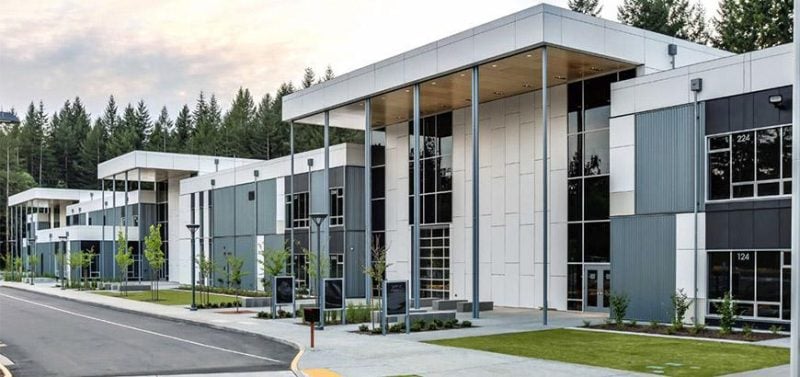
Tesla STEM High School ranks as Washington’s top public high school and holds the 14th position nationally according to U.S. News & World Report. The school operates within the top 1% of all public schools in the state.
Located in Redmond, the magnet school serves 601 students in grades 9-12. It maintains a student-teacher ratio of 20.5 to 1 within the Lake Washington School District.
The school offers Advanced Placement courses and operates a Gifted & Talented program. Its STEM focus provides students with specialized education in science, technology, engineering, and mathematics.
Tesla STEM High School achieved recognition in the 2024 Best U.S. High Schools rankings based on college readiness metrics. The evaluation considered data from nearly 25,000 public high schools nationwide across six key performance factors.
6. Garfield High School, Seattle, WA
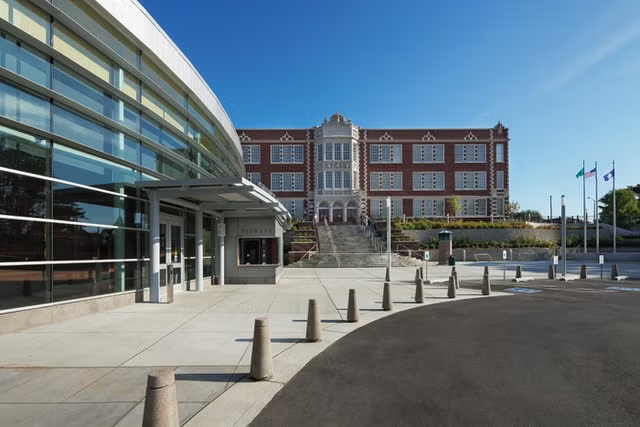
Garfield High School serves 1,641 students in grades 9-12 in Seattle’s Central District. The school is located at 400 23rd Avenue and is named after President James A. Garfield.
The school ranks in the top 20% of all Washington state schools for overall test scores. Math and reading proficiency both place in the top 30% statewide.
Garfield operates with a student-teacher ratio of 24:1. The school offers Advanced Placement courses and maintains a Gifted and Talented program for qualifying students.
The school consistently ranks among the top high schools in Washington state. It serves a diverse student body and maintains strong academic achievement levels with high graduation rates.
Garfield High School is part of the Seattle Public Schools district. The school provides two sports programs alongside its academic offerings.
7. Eastside Catholic School, Sammamish, WA
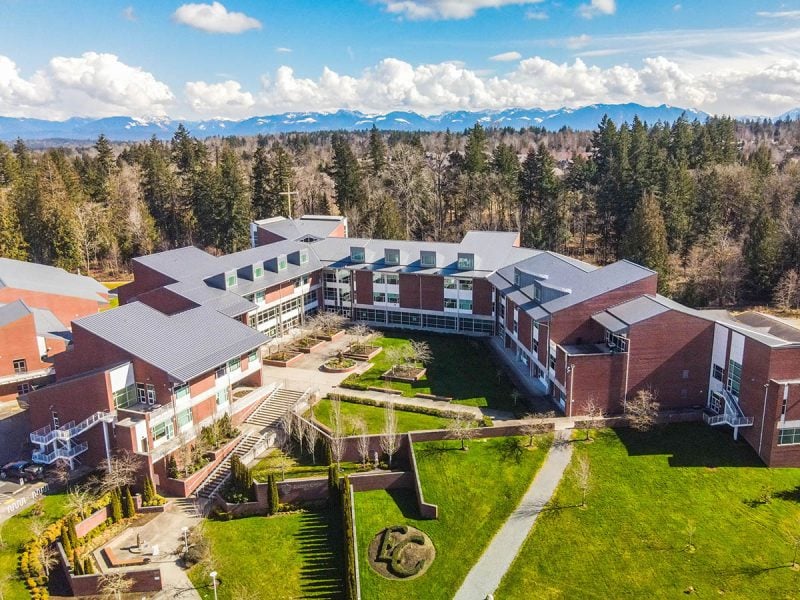
Eastside Catholic School ranks among the top 20% of private schools in Washington state. The coeducational institution serves 862 students in grades 6-12 on its Sammamish campus.
Founded in 1980, the school opened its permanent 50-acre campus in 2008. The facilities include fully equipped science labs, integrated classroom technology, and dedicated collaboration spaces.
This independent Catholic school emphasizes college preparation alongside faith-based education. Students participate in 32 different sports programs and various extracurricular activities.
The school holds the #3 ranking among Catholic high schools in Washington. It maintains an A+ overall grade from educational rating organizations.
Eastside Catholic focuses on academic excellence while nurturing spiritual growth and student engagement. The institution promotes leadership development and community service as core values.
The campus culture emphasizes supportive relationships and community building among students and faculty.
8. Innovations Academy, Kirkland, WA
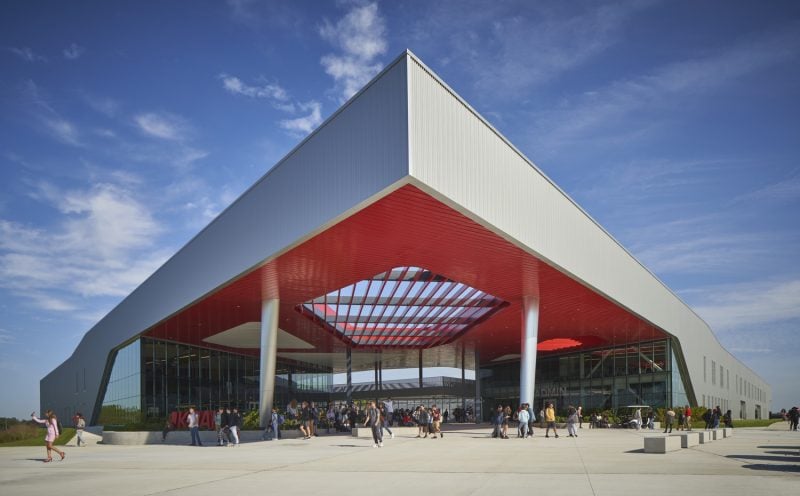
Innovations Academy stands as a distinguished public high school within the Lake Washington School District. The school serves students in Kirkland, Washington, offering specialized programming focused on technology and innovation.
The academy emphasizes project-based learning and real-world applications. Students engage with cutting-edge technology and develop skills in engineering, computer science, and digital design.
Small class sizes allow for personalized attention and mentorship opportunities. The school maintains strong partnerships with local technology companies and universities.
Innovations Academy attracts students interested in STEM fields and entrepreneurship. The curriculum integrates traditional academic subjects with hands-on technical experiences.
The school’s location in Kirkland provides access to the broader Seattle metropolitan area’s technology ecosystem. Students benefit from internship opportunities and industry connections throughout the region.
9. BASIS Scottsdale, Scottsdale, AZ
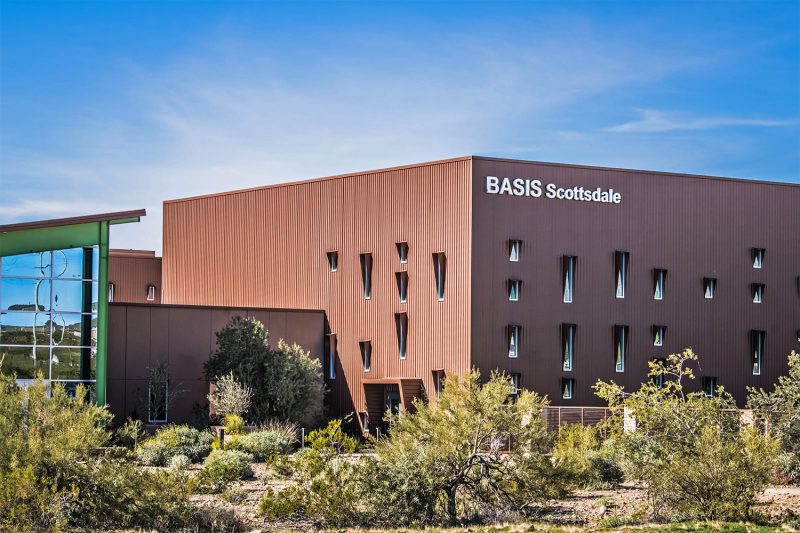
BASIS Scottsdale stands as Arizona’s top-ranked public high school according to 2025 Niche rankings. The school serves 981 students across grades 4-12, making it a comprehensive educational institution.
The school ranks within the top 1% of all public schools in Arizona. BASIS Charter Schools consistently achieve recognition among the nation’s best high schools.
BASIS Scottsdale operates as part of BASIS Charter Schools Inc., which has established a reputation for academic excellence. The school’s rigorous curriculum and high academic standards contribute to its outstanding performance.
Located in Scottsdale, the school represents one of the largest public high schools in Arizona by enrollment. Students benefit from the BASIS network’s proven educational model and comprehensive academic programs.
The school’s consistent high rankings reflect its commitment to preparing students for college and career success through challenging coursework and dedicated faculty.
10. BASIS Tucson North, Tucson, AZ
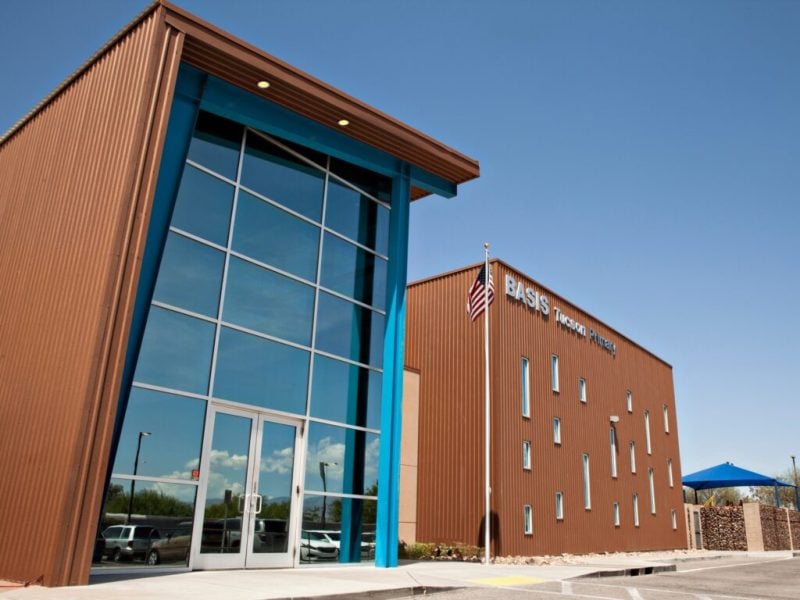
BASIS Tucson North earned the top ranking as the number one public high school in America according to U.S. News & World Report’s 2025 rankings. This marks the second time the charter school has achieved this distinction, previously holding the top spot in 2008.
The school operates as part of the BASIS Charter Schools network, which began with this Tucson campus in 1998. The tuition-free public charter school serves students through a STEM-infused liberal arts curriculum designed to prepare them for college and careers.
BASIS Tucson North consistently demonstrates exceptional academic performance with proficiency rates that significantly exceed state averages. The school maintains a 5-star rating from SchoolDigger and ranks among Arizona’s top educational institutions.
The BASIS network has expanded to over 40 campuses across Arizona, Texas, Louisiana, and Washington D.C. Applications for the 2026-27 school year open November 4, 2025.
11. Phoenix Country Day School, Paradise Valley, AZ
Phoenix Country Day School serves 741 students from prekindergarten through grade 12 in Paradise Valley, Arizona. The private institution maintains a student-teacher ratio of 7 to 1.
The school ranks within the top 20% of private schools in Arizona. It operates as the Valley’s only independent Pre-K through Grade 12 institution.
Phoenix Country Day School offers Advanced Placement courses and 21 sports programs. Students participate in visual, digital, and performing arts programs that encourage creative expression.
Tuition reaches $34,700 for the highest grade level. The school reports that 100% of graduates attend four-year colleges after graduation.
The campus emphasizes academic excellence while maintaining balance and curiosity among students. Phoenix Country Day School holds recognition as a leader in Arizona education at both state and national levels.
12. Green Fields Country Day School, Scottsdale, AZ
Green Fields Country Day School operates as a private institution serving students from kindergarten through 12th grade. The school maintains small class sizes to provide individualized attention from faculty members.
Located at 10460 N. 56th Street in Scottsdale, the school can be reached at 480-452-5777. Students participate in comprehensive academic programs alongside extracurricular activities including team sports and fine arts.
The school emphasizes both rigorous academics and character development. Students have opportunities to engage in student government and community service projects throughout their enrollment.
Green Fields Country Day School focuses on preparing students for college readiness while fostering personal growth. The institution maintains its commitment to providing quality education in a supportive environment for Arizona families.
13. Francis Parker School, San Diego, CA
Francis Parker School stands as one of San Diego’s premier private educational institutions. Founded in 1912 by Clara Sturges Johnson and William Templeton Johnson, this independent day school has served students for over a century.
The school enrolls approximately 1,210 students from junior kindergarten through twelfth grade. Parker operates as a co-educational college preparatory institution with a progressive educational approach.
Francis Parker School ranks #93 among the best private K-12 schools in America according to recent national assessments. The school also places #109 among the top college prep private high schools nationwide.
The institution maintains a values-driven academic environment that emphasizes both rigorous coursework and character development. Students benefit from comprehensive college preparation resources and diverse extracurricular opportunities.
Parker consistently appears among San Diego County’s top-ranked private schools alongside institutions like The Bishop’s School and La Jolla Country Day School.
14. Torrey Pines High School, San Diego, CA
Torrey Pines High School serves 2,644 students in grades 9-12 as part of the San Dieguito Union High School District. The public school maintains a student-teacher ratio of 27 to 1.
Academic performance shows 74% of students achieve proficiency in reading. Math proficiency stands at 53% according to state test scores.
The school offers Advanced Placement courses and operates a Gifted & Talented program. These programs provide enhanced academic opportunities for high-achieving students.
Torrey Pines High School receives recognition as a top-rated institution within San Diego’s competitive educational landscape. The school serves the affluent Torrey Pines area of northern San Diego.
Students participate in the school’s pledge emphasizing pride in themselves, their peers, and their institution. This reflects the school’s commitment to building community and character alongside academic achievement.
15. Los Angeles Center for Enriched Studies, Los Angeles, CA
Los Angeles Center for Enriched Studies (LACES) is a public magnet school serving grades 6-12 in Los Angeles. The school operates as a university preparatory institution within the Los Angeles Unified School District.
LACES is located on 18th Street between La Cienega Boulevard and Fairfax Avenue in the Faircrest Heights district. The school enrolls 1,387 students with a student-teacher ratio of 21 to 1.
Academic performance shows 69% of students achieving proficiency in reading and 47% in math. The school ranks within the top 20% of all public schools in California.
LACES offers Advanced Placement courses and maintains a Gifted and Talented program. The student body has 73% minority enrollment, with 54% of students qualifying as economically disadvantaged.
The school has received recognition as a California Distinguished School and National Blue Ribbon School. It holds accreditation from WASC and certification from Magnet Schools of America.
16. Lynbrook High School, San Jose, CA
Lynbrook High School ranks #10 among California’s public schools and #86 nationally. The school serves 1,720 students in grades 9-12 in West San Jose.
Academic performance stands out with 89% of students taking at least one AP course. Additionally, 86% of students pass their AP exams, demonstrating strong college preparation.
The school operates within the Fremont Union High School District as one of seven high schools. It holds the #1 position among schools in its district.
Lynbrook earned recognition as the #15 STEM high school nationally in 2025. The school maintains a competitive academic environment with high standards.
Students benefit from comprehensive AP course offerings and strong college readiness programs. The school consistently ranks among the top public high schools in Northern California.
17. The Harker School, San Jose, CA
The Harker School stands as one of California’s most prestigious private institutions. Located in San Jose, this coeducational school serves students from kindergarten through grade 12.
The school maintains rigorous academic standards with strong college preparation programs. Students consistently achieve high standardized test scores, with recent SAT averages reaching 1510.
Harker offers comprehensive STEM programs alongside robust humanities and arts curricula. The school provides numerous extracurricular activities and competitive athletic programs.
The institution operates across multiple campuses in the San Jose area. Class sizes remain relatively small, fostering personalized attention and academic support.
Graduates frequently gain admission to top-tier universities nationwide. The school’s alumni network includes successful professionals across various industries.
Harker’s reputation extends beyond academics through its emphasis on character development and community service. The school prepares students for leadership roles in college and professional settings.
18. Mission San Jose High School, Fremont, CA
Mission San Jose High School stands as the top-ranked public high school in the San Francisco Bay Area. The school ranks 8th in California and 80th nationally according to recent U.S. News rankings.
Founded in 1964, this four-year co-educational public high school serves the Mission San Jose district of Fremont. The school operates as a magnet school within the Fremont Unified School District.
Mission San Jose High School offers Advanced Placement courses and Project Lead The Way curriculum. The school maintains a Gifted and Talented program for high-achieving students.
The institution consistently ranks among the top 5% of California high schools. State testing assessments and academic performance data support these high rankings.
Students benefit from rigorous academic programs and comprehensive college preparation resources. The school’s reputation attracts families seeking quality public education in the Bay Area.
19. Henry M. Gunn High School, Palo Alto, CA
Henry M. Gunn High School stands as one of California’s premier public institutions. The school serves 1,713 students in grades 9-12 within the Palo Alto Unified School District.
Established in 1964, the school bears the name of Henry Martin Gunn, who served as Palo Alto’s superintendent from 1950 to 1961. It represents one of two public high schools in Palo Alto.
Gunn consistently ranks among the state’s top academic performers. The school places within the top 5% of all California public schools and holds the number one position for public high schools in the San Francisco Bay Area.
The curriculum emphasizes college preparation with extensive Advanced Placement course offerings. Students also benefit from Project Lead The Way programs, which focus on STEM education and career readiness.
The school maintains a student-teacher ratio of 17:1, providing students with adequate individualized attention for academic success.
20. Palo Alto High School, Palo Alto, CA
Palo Alto High School operates as one of two high schools in the Palo Alto Unified School District. The school consistently ranks among California’s top-performing public high schools.
Students at Palo Alto High benefit from strong academic programs and comprehensive course offerings. The school maintains high graduation rates and demonstrates exceptional performance on standardized assessments.
The campus provides extensive extracurricular opportunities including competitive athletics and diverse elective classes. These programs complement the rigorous academic curriculum available to students.
Palo Alto High School serves a community known for its emphasis on educational excellence. The school attracts families seeking quality public education in the Silicon Valley area.
The institution has built a reputation for preparing students for college and career success. Its location in Palo Alto provides students access to numerous educational and professional opportunities in the surrounding tech industry.
21. Gunn High School, Palo Alto, CA
Henry M. Gunn High School stands as one of California’s premier public high schools. The school consistently earns top rankings from multiple education rating organizations.
In 2024, Gunn ranked #53 nationally and #3 in California according to Niche. The school holds the #1 position for public high schools in the San Francisco Bay Area.
Gunn operates as part of the Palo Alto Unified School District alongside Palo Alto High School. Both schools maintain exceptional academic standards and college preparation programs.
The school offers Advanced Placement courses and Project Lead The Way curriculum. Students benefit from consistently high graduation rates and low dropout rates.
Gunn’s academic excellence translates into strong standardized test performance. The school attracts families seeking rigorous college preparatory education in the competitive Silicon Valley market.
22. International School of the Peninsula, Palo Alto, CA
International School of the Peninsula operates as an independent co-educational day school in Palo Alto, California. The school serves students from prekindergarten through 8th grade with a focus on language immersion programs.
The institution offers both Chinese/English and French/English immersion curricula. This dual-language approach provides students with bilingual education from an early age.
Located at 151 Laura Lane, the school enrolls approximately 570-580 students. The campus serves a diverse student body in the heart of Silicon Valley.
The school maintains a coeducational environment with students aged 6-14. Philippe Dietz serves as the head of school, overseeing the institution’s academic programs.
International School of the Peninsula follows a nonsectarian approach to education. The school emphasizes both academic excellence and cultural understanding through its immersion methodology.
The institution represents one of 37 private schools in Palo Alto, contributing to the area’s strong educational landscape.
23. Crystal Springs Uplands School, Hillsborough, CA
Crystal Springs Uplands School is an independent, coeducational college preparatory day school founded in 1952. The school serves grades 6-12 with approximately 540 students total.
Located in Hillsborough, California, the school operates as a nonsectarian institution. It maintains a strong academic reputation in the San Francisco Bay Area.
The school was ranked as the sixth best private high school in California by Niche in 2024. It consistently places within the top 20% of private schools statewide.
Crystal Springs Uplands focuses on college preparation through rigorous academics. The school emphasizes transformative teaching methods and meaningful student-teacher connections.
The campus serves both middle school students in grades 6-8 and upper school students in grades 9-12. Class sizes remain relatively small to maintain personalized attention for each student.
24. St. Francis High School, Mountain View, CA
St. Francis High School is a distinguished private Catholic institution serving 1,745 students in grades 9-12. The coeducational school operates within the Holy Cross tradition in Mountain View, California.
The school ranks within the top 20% of private schools in California. It maintains a student-teacher ratio of 17 to 1, providing personalized attention for academic growth.
St. Francis offers a comprehensive college preparatory curriculum featuring Advanced Placement courses and honors classes. The rigorous academic programs prepare students for higher education success.
The student body represents significant diversity, with minority enrollment comprising 62.3% of the population. This creates a multicultural learning environment that enriches the educational experience.
The school provides various enriching programs including academics, arts, athletics, and community responsibility initiatives. These comprehensive offerings support well-rounded student development beyond traditional classroom learning.
25. Stanford Online High School, Stanford, CA
Stanford Online High School operates as an independent school within Stanford University, serving academically talented students in grades 7-12. Founded in 2006, the institution provides rigorous college-preparatory education through live online classes.
The school serves 798 students worldwide with a student-teacher ratio of 12:1. This selective program targets academically advanced students who need more challenge than traditional local schools offer.
Stanford OHS ranks within the top 20% of private schools in California. The institution maintains accreditation and focuses on fostering a global community of intellectually curious learners.
Students participate in live, interactive classes led by dedicated instructors. The curriculum emphasizes academic rigor and prepares students for competitive college admissions.
The school’s affiliation with Stanford University provides students access to high-quality educational resources and prestigious academic standards.
26. Cathedral Catholic High School, San Diego, CA
Cathedral Catholic High School serves approximately 1,700 students in grades 9-12 as a private Catholic college preparatory institution. The Diocese of San Diego operates this coeducational day school.
The school was founded in 2005, though its heritage traces back to University of San Diego High School, established in 1957. This lineage represents decades of Catholic education excellence in the San Diego region.
Cathedral Catholic maintains accreditation from both the Western Association of Schools and Colleges and the Western Catholic Educational Association. The school draws students from throughout the greater San Diego area.
The institution emphasizes four core values: character, faith, knowledge, and responsibility. These principles guide student development and leadership preparation.
Cathedral Catholic offers comprehensive academic programs alongside extensive extracurricular activities, athletics, and clubs. The school’s football program has achieved statewide recognition, competing against top-ranked teams across California.
27. Seattle Academy of Arts and Sciences, Seattle, WA
Seattle Academy of Arts and Sciences serves grades 6-12 on an urban Capitol Hill campus. The independent school has operated for more than 40 years as a co-educational institution.
The school enrolls 1,081 students with a student-teacher ratio of 6.0 to 1. This makes it the fourth largest private high school in Washington state.
SAAS built its curriculum around five programmatic pillars: Academics, Arts, Athletics, Outdoor & Travel, and Service. These areas work together to develop critical thinking skills across different learning styles.
Niche ranked Seattle Academy as the seventh best private high school in Washington as of 2020. The same review site placed it ninth for college prep programs and fifty-eighth for diversity among private schools statewide.
The school emphasizes questioning, imagination, and creativity to prepare students for contributing to society.
28. Bainbridge High School, Bainbridge Island, WA
Bainbridge High School ranks 5th out of 437 high schools in Washington state. The school earned a 5-star rating from SchoolDigger for its exceptional academic performance.
The school serves grades 9-12 with 1,181 students. It maintains a student-teacher ratio of 21:1 within the Bainbridge Island School District.
Academic achievement at Bainbridge High School exceeds state averages significantly. 90.94% of students demonstrate proficiency or better in English Language Arts. In mathematics, 74.39% of students achieve proficiency or better.
The school operates under the Bainbridge Island School District’s non-discrimination policy. This policy covers sex, race, religion, national origin, disability, and other protected categories.
Bainbridge High School consistently appears among Washington’s top-performing public high schools. The institution provides equal access to various programs and activities for all students.
29. Westview High School, Beaverton, OR
Westview High School serves approximately 2,700 students in grades 9-12 within the Beaverton School District. The school ranks in the top 20% of all public schools in Oregon and holds a 4-star rating from SchoolDigger.
Located at 4200 NW 185th Ave in Portland, Westview is the largest high school in the Beaverton School District. It is also the third largest high school in the state of Oregon.
The school opened in 1994 with its first graduating class in June 1996. Westview offers Advanced Placement courses and maintains a Gifted & Talented program for high-achieving students.
The student body includes 63% minority enrollment. Additionally, 31% of students qualify as economically disadvantaged, reflecting the school’s diverse population.
Westview maintains a favorable student-to-teacher ratio that supports personalized attention in the classroom.
30. Sunset High School, Portland, OR
Sunset High School serves 1,879 students in grades 9-12 within the Beaverton School District 48j. The school ranks in the top 30% of all public schools in Oregon.
The campus offers an International Baccalaureate program alongside a Gifted & Talented program. These advanced academic options provide rigorous coursework for college-bound students.
With a student-teacher ratio of 22.2 to 1, Sunset High School maintains relatively manageable class sizes. The school is the 16th largest public high school in Oregon.
The faculty includes dedicated educators who bring professional experience to their teaching. Physics teacher Kathrine Kraft transitioned from the private sector to encourage more students, particularly girls, to pursue STEM careers.
Sunset High School’s location in the Portland metropolitan area provides students access to urban resources and opportunities. The school’s academic programs and rankings reflect its commitment to preparing students for post-secondary success.
Key Factors That Define Top Western High Schools
Top Western high schools excel through rigorous academic programs that prepare students for competitive colleges, comprehensive extracurricular offerings that develop well-rounded individuals, and inclusive environments that serve diverse student populations effectively.
Academic Performance and College Readiness
State assessment proficiency serves as a primary indicator of academic excellence in Western high schools. Schools demonstrate quality through consistent performance on standardized tests and college entrance examinations.
Advanced Placement course availability distinguishes premier institutions. Top schools typically offer 15-25 AP courses across multiple disciplines. Students at these schools achieve AP pass rates of 70% or higher.
College preparation metrics include graduation rates exceeding 95% and college enrollment rates above 85%. These schools maintain strong relationships with university admissions offices and provide dedicated college counseling services.
Faculty qualifications matter significantly. Leading Western high schools employ teachers with advanced degrees and subject-area expertise. Student-to-teacher ratios remain below 20:1 in most top-performing schools.
Extracurricular Opportunities
Comprehensive athletic programs span multiple seasons and skill levels. Top Western schools compete in state championships regularly and offer both traditional and emerging sports options.
Arts programs receive substantial funding and recognition. These schools maintain theater departments, music ensembles, visual arts studios, and digital media programs. Many students earn regional and state-level arts awards.
STEM competitions and clubs prepare students for technical careers. Robotics teams, science olympiad groups, and coding clubs provide hands-on learning experiences beyond classroom instruction.
Leadership development occurs through student government, honor societies, and service organizations. Students participate in community service projects and develop civic engagement skills.
Diversity and Inclusion Initiatives
Demographic representation reflects community populations while supporting underserved student achievement. Top schools demonstrate success across racial, ethnic, and socioeconomic groups through targeted support programs.
English Language Learner support includes specialized instruction and cultural transition assistance. These programs help non-native speakers achieve academic success while maintaining cultural identity.
Special education services meet individual student needs through personalized learning plans. Schools provide appropriate accommodations and inclusive classroom environments.
Equity measures include equal access to advanced coursework and extracurricular activities. Schools track participation rates across demographic groups and adjust programs to ensure broad representation.
Admission Insights and Competitive Trends
Top Western high schools implement increasingly selective admission criteria, with many charter and magnet schools requiring comprehensive applications including essays, recommendations, and academic portfolios. Enrollment patterns show growing competition for STEM-focused programs and language immersion tracks.
Selective Admissions Policies
Charter and Magnet Schools lead admission selectivity in the Western region. BASIS schools across Arizona and California require entrance exams with cut-off scores typically in the 85th percentile or higher.
California’s specialized programs use lottery systems weighted by academic performance. Students need minimum 3.5 GPAs for consideration at competitive magnet programs.
Application Requirements vary significantly:
- Academic transcripts with B+ average minimum
- Standardized test scores (PSAT, entrance exams)
- Teacher recommendations from core subject instructors
- Personal essays addressing program fit
Private preparatory schools maintain the highest selectivity rates. Admission rates at top-tier institutions range from 15-30% of applicants.
Geographic factors influence competition levels. Urban areas like Los Angeles, Seattle, and Denver show 3-5 times more applicants per available seat than rural districts.
Recent Changes in Enrollment Patterns
STEM program demand increased 40% across Western states since 2020. Engineering and computer science tracks show the highest application volumes at competitive high schools.
Dual enrollment options drive student choices. Programs offering college credits attract 25% more applicants than traditional curricula.
Demographic shifts affect enrollment patterns. Hispanic student enrollment grew 15% in top-performing schools, while Asian American representation increased 8% in selective STEM programs.
Post-pandemic preferences favor schools with robust online learning capabilities. Parents prioritize institutions demonstrating technological infrastructure and flexible learning models.
International Baccalaureate programs see rising interest, with applications up 20% region-wide. These programs appeal to college-bound students seeking rigorous academic preparation.

